Discover the Tesla Vegan Leather Interior for Eco-Luxury
Ever wondered how luxury and sustainability can coexist in the automotive world? Well, Tesla’s vegan leather interior is the answer. As a passionate advocate for non-toxic living, I’m thrilled to introduce you to this game-changing innovation. It’s not just a style statement, but a testament to Tesla’s commitment to eco-friendly luxury.
In this article, we’ll delve into how Tesla’s vegan leather, a standard feature since 2019, is revolutionizing the car industry. We’ll explore how this cruelty-free alternative mimics the elegance of traditional leather, without the need for animal products.
Join me as we uncover the benefits of Tesla’s vegan leather interior, an exciting blend of design versatility and practicality that’s influencing the entire automotive industry. Let’s discover together how making conscious choices can drive us towards a sustainable future.
What is Tesla’s Vegan Leather Interior?
Tesla’s vegan leather interior is a game-changer in the world of cars, offering a compassionate and stylish alternative to traditional leather. Imagine sliding into a car that feels luxurious and sophisticated, yet aligns with your values of kindness and sustainability. That’s exactly what Tesla’s innovative approach brings to the table.
Back in 2016, Tesla introduced vegan leather in its Model X and Model S, marking a significant shift towards cruelty-free options. By 2019, this became the standard for all Tesla models, a testament to their commitment to ethical practices. It’s a journey that resonates deeply with me, as I’ve always believed in the power of choices that reflect both personal and environmental well-being.
The magic ingredient in Tesla’s vegan leather is polyurethane, a type of plastic that can be crafted to mimic the rich texture and appearance of genuine leather. This means you get all the elegance without compromising on your values. It’s a win-win, offering a premium look while being gentle on the planet.
Switching to vegan leather is more than just a trend; it’s a statement of intent. Tesla’s decision highlights their dedication to sustainability and innovation, providing an eco-friendly option for those of us who care about the future. It’s about making choices that matter, without sacrificing quality or style.
If you’re considering a Tesla, know that you’re not just choosing a car; you’re choosing a lifestyle that prioritizes ethics and the environment. It’s a step towards a more sustainable future, one that feels as good as it looks.
Why Tesla Switched to Vegan Leather Interiors
Tesla’s decision to embrace vegan leather interiors is a fascinating journey that intertwines ethics, sustainability, and innovation. Driven by the rising demand for cruelty-free alternatives, Tesla’s shift reflects a broader movement towards compassionate consumer choices. Animal rights organizations, like PETA, have been pivotal in advocating for the elimination of animal-derived materials, and Tesla listened. This transition is not just about ethics; it resonates deeply with Tesla’s commitment to a sustainable future.
The environmental impact of traditional leather is something I’ve pondered often. The resource-heavy cattle farming process has significant ecological consequences. Tesla’s exploration of vegan leather alternatives is a step towards reducing this impact. Vegan leather production requires fewer resources and emits less pollution compared to conventional leather. It’s a choice that aligns perfectly with Tesla’s mission to minimize its ecological footprint.
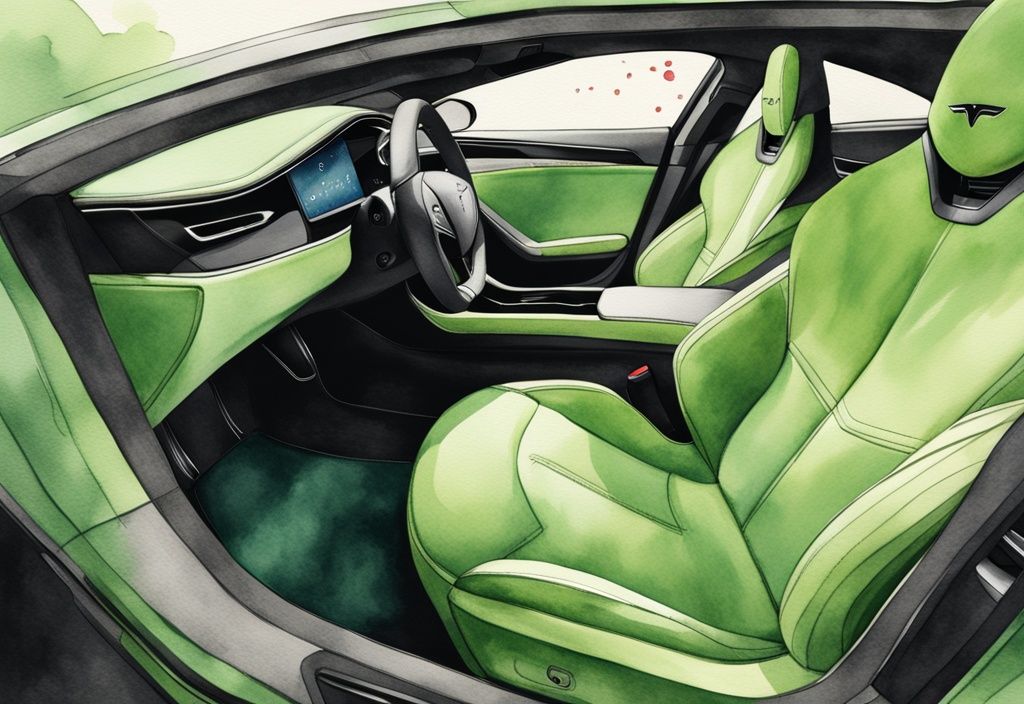
This change is part of Tesla’s broader commitment to environmental responsibility. The company is always on the lookout for ways to enhance the eco-friendliness of its vehicles. By incorporating vegan leather interiors, Tesla sets a precedent in the automotive industry, showcasing leadership in the shift towards greener practices. It’s a move that inspires me, and I hope it inspires you too, to consider the intertwined benefits of such choices for both personal health and our planet’s well-being.
Materials Used in Tesla Vegan Leather
Exploring the materials in Tesla’s Vegan Leather Interior reveals a fascinating journey from traditional plastics to innovative natural alternatives. This shift is not just about aesthetics; it’s a testament to Tesla’s commitment to sustainability and reducing environmental impact.
Traditional Plastics vs. Natural Alternatives
When Tesla first introduced their Vegan Leather Interior, they relied heavily on traditional plastics like PVC and PU. These materials were chosen for their ability to mimic the look and feel of genuine leather. However, as I delved deeper into the topic, I discovered that Tesla’s journey didn’t stop there. Over time, they began to embrace more sustainable options, reflecting a growing awareness of environmental concerns and a desire to move away from synthetic plastics.
It’s truly inspiring to see how Tesla has innovated by incorporating natural materials such as algae, fruit peels, and bamboo into their vegan leather. This evolution not only enhances the sustainability of their interiors but also aligns with Tesla’s broader environmental goals. By using these natural materials, Tesla significantly reduces the carbon footprint associated with traditional plastic production, offering eco-conscious consumers a more sustainable choice.
One of the most exciting collaborations I’ve come across is between Tesla and von Holzhausen. Together, they’ve developed Banbū, a remarkable bamboo-based leather alternative. Banbū stands out for being 83% plant-based and biodegradable. This innovation marks a significant step forward in creating sustainable automotive interiors. It’s a powerful example of how Tesla is setting a new standard for the industry, encouraging others to follow suit.
As I reflect on these advancements, it’s clear that Tesla’s commitment to sustainability is not just a trend but a transformative journey. This approach not only enhances the environmental credentials of their interiors but also inspires us all to consider the impact of our choices on the planet. With each step, Tesla is paving the way for a more sustainable future, one that we can all be a part of.
Benefits of Tesla Vegan Leather Interior
Exploring the Tesla Vegan Leather Interior reveals a blend of sustainability, design versatility, and comfort that sets it apart in the automotive world. Each aspect of this innovative material contributes to a more eco-conscious and personalized driving experience.
Sustainability and Environmental Impact
When I first learned about the Tesla Vegan Leather Interior, I was thrilled to see a major car manufacturer taking such a bold step towards sustainability. By choosing vegan leather, Tesla significantly reduces the environmental footprint associated with traditional leather production. This choice helps address the ecological concerns of cattle farming, from greenhouse gas emissions to land degradation. It’s heartening to know that Tesla is not stopping there. They are committed to refining the sustainability of their materials, minimizing plastic use, and exploring eco-friendly alternatives. This ongoing journey is a testament to their dedication to lessening the environmental impact of their interiors.
Design Versatility and Customization
One of the joys of the Tesla Vegan Leather Interior is its design versatility. Imagine being able to choose from a stunning array of colors and finishes that go beyond what traditional leather offers. Whether you prefer classic black, pristine white, or elegant cream, there’s a shade to match your personal style. This customization doesn’t just enhance the aesthetic appeal of your Tesla; it allows you to express your individuality. It’s like having a canvas where you can paint your personality, making your car truly yours.
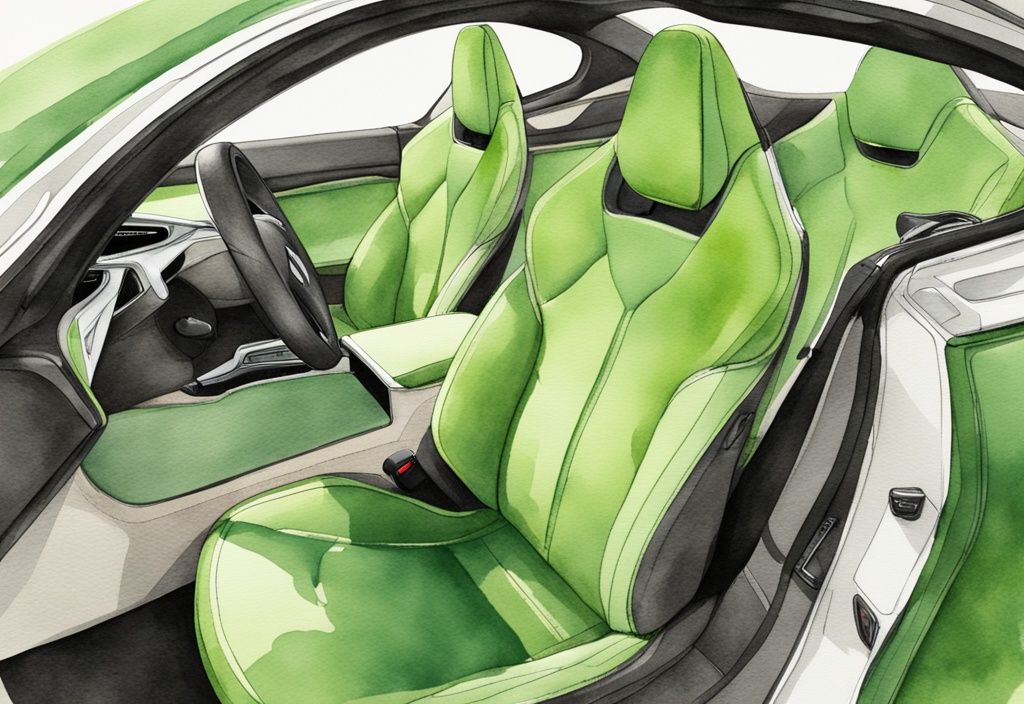
Comfort and Practicality
Comfort is key in any vehicle, and the Tesla Vegan Leather Interior excels in this area. Its durability and luxurious feel make it a practical choice for anyone who values both style and function. I remember the first time I sat in a Tesla with vegan leather seats; the comfort was undeniable. This material is designed to withstand daily wear and tear, ensuring it remains beautiful over time. If you’re interested in sustainable choices, you might also want to explore our guide on the best non-toxic rain boots to keep your feet dry without compromising on health and the environment. Plus, it’s easy to clean, which is a blessing for families and busy individuals. The use of vegan leather extends to the steering wheel, creating a cohesive and luxurious feel throughout the vehicle. This focus on comfort and practicality truly enhances the driving experience, making every journey a pleasure.
Maintenance and Care for Tesla Vegan Leather
Embracing a Tesla Vegan Leather Interior is a delightful choice for those of us who cherish both luxury and sustainability. This section delves into the essential practices for maintaining and preserving the beauty of your vegan leather interior, ensuring it remains a testament to your commitment to a non-toxic lifestyle.
Recommended Cleaning Practices
From my own journey with vegan leather, I’ve learned that the right cleaning practices can make all the difference. Tesla recommends using non-abrasive, non-chemical cleaners to keep the material’s integrity intact. I remember the first time I tried a gentle, plant-based cleaner—it was like a revelation! Regular cleaning is not just about aesthetics; it’s about preventing dirt buildup and potential damage. By following these simple guidelines, you’ll find that your Tesla Vegan Leather Interior remains as pristine and luxurious as the day you first sat in it.
Preventing Common Issues
I’ve had my fair share of mishaps, like the time I accidentally spilled sunscreen on my car seat. It’s crucial to avoid contact with certain products, such as hairspray, sunscreen, and hand sanitizers, which can deteriorate the material. Protecting your interior from excessive heat and direct sunlight is equally important. I once parked under the blazing sun, only to find slight swelling on the leather. These experiences taught me the value of taking precautions. By doing so, you can maintain the aesthetic and functional qualities of your Tesla Vegan Leather Interior, ensuring every drive is as comfortable and stylish as the last.
Challenges and Criticisms of Tesla’s Vegan Leather
Tesla’s vegan leather interior has been a topic of much discussion, drawing both praise and criticism. This section delves into the durability concerns and environmental implications associated with Tesla’s innovative material choice, providing a comprehensive look at the challenges faced and the strides made towards improvement.
Durability Concerns and Customer Feedback
When I first heard about the issues with Tesla’s vegan leather interior, my heart sank a little. Imagine investing in a car that promises a cruelty-free experience, only to find the material bubbling and deteriorating in the summer heat. This was the reality for many early Tesla adopters, especially those in warmer climates. The swelling and bubbling of the vegan leather raised serious questions about its longevity.
But here’s the silver lining: Tesla listened. They took these concerns to heart and made significant improvements. By refining the material composition and enhancing their manufacturing processes, they’ve managed to reduce these issues significantly. Now, the durability of Tesla’s vegan leather interior has improved, offering a more reliable and long-lasting experience for drivers. It’s a testament to how feedback can drive positive change, and it gives me hope for the future of sustainable materials in the automotive industry.
Environmental Concerns with Synthetic Materials
While I appreciate Tesla’s move towards a cruelty-free interior, I can’t ignore the environmental concerns that come with synthetic materials. Yes, the vegan leather is animal-free, but it relies heavily on plastic-based components. This means potential release of harmful substances and a lack of biodegradability, which is a bit of a double-edged sword for those of us committed to sustainability.
Environmentalists have been vocal about these issues, and rightly so. The challenge lies in balancing the luxurious feel of traditional leather with the need for eco-friendly alternatives. Fortunately, Tesla is not turning a blind eye. They’re investing in research and development to find materials that not only replicate the luxury of leather but also minimize environmental impact. This ongoing commitment to innovation is encouraging, and it reminds me that every step, no matter how small, is a step towards a more sustainable future.

Industry Impact and Future Trends
Influence on Other Car Manufacturers
When I first heard about Tesla’s bold move to introduce vegan leather interiors, it felt like a breath of fresh air in the luxury car market. This innovative step has sparked a ripple effect, encouraging other car manufacturers to rethink their material choices. It’s fascinating to see how Tesla’s commitment to sustainability is nudging the entire industry towards more eco-friendly practices. As more consumers, like myself, demand products that align with our values, carmakers are beginning to embrace cruelty-free and sustainable materials. This shift is not just about aesthetics; it’s about a deeper change in how cars are designed and produced, with a keen eye on reducing environmental impact.
I’ve noticed that Tesla’s adoption of vegan leather has prompted many of us to reconsider what we expect from luxury vehicles. It’s not just about luxury anymore; it’s about responsibility. This change is inspiring a broader reevaluation of traditional manufacturing processes, pushing the industry to innovate and adapt. It’s a thrilling time to witness this transformation, knowing that our choices as consumers are driving these positive changes.
Ongoing Developments in Sustainable Materials
The journey towards sustainable automotive interiors is one that I find incredibly exciting. Tesla’s collaboration with companies like von Holzhausen is a testament to the potential of plant-based materials. Take Banbū, for example—a bamboo-derived material that’s not only biodegradable but also reduces our reliance on plastics. This kind of innovation is paving the way for a new era in car design, where sustainability is at the forefront.
As I explore these developments, I’m filled with hope for the future. The integration of sustainable materials is becoming more than just a trend; it’s a movement towards a standard practice in the industry. This evolution reflects a growing commitment to minimizing the ecological footprint of vehicle production. It’s heartening to see how these changes are making it easier for us to choose products that are better for our planet, without compromising on quality or style.
FAQ
How does Tesla’s vegan leather impact the environment?
Imagine a world where the interiors of our cars not only look sleek but also tread lightly on our planet. Tesla’s vegan leather is a step in that direction. By opting out of animal products, Tesla reduces the environmental toll of cattle farming. Yet, like many innovations, it’s not without its challenges. The use of plastics is still part of the equation, but Tesla is committed to cutting down on plastic usage and boosting sustainability. Every small step counts, right?
What are the common issues reported with Tesla’s vegan leather?
I remember the first time I heard about issues with Tesla’s vegan leather. It was during a sunny road trip, and a friend mentioned how the material can swell or bubble, especially in warmer climates. It’s a bit like how our skin reacts to too much sun. Tesla is aware of these hiccups and is continuously refining the material to withstand such conditions better. It’s reassuring to know they’re on it, striving for perfection.
How should I care for my Tesla vegan leather interior?
Caring for your Tesla vegan leather interior is simpler than you might think. I’ve found that following Tesla’s cleaning guidelines is key. Avoid harsh chemicals—think of it like caring for your skin. Protecting the interior from excessive heat and sunlight is crucial too, much like how you’d shield a cherished plant from the harsh midday sun. With a little love and attention, your interior will stay beautiful for years to come.
Conclusion
Tesla’s vegan leather interior is more than just a design choice; it’s a heartfelt commitment to a sustainable future. Imagine sliding into a car that not only feels luxurious but also aligns with your values of environmental responsibility. That’s the magic of Tesla’s innovative approach. By opting for synthetic alternatives over traditional leather, Tesla addresses ethical concerns about animal products and significantly reduces the environmental footprint tied to cattle farming. If you’re interested in eco-friendly choices for your kitchen, check out our guide on the best non-toxic waffle makers. This shift is a beacon for those of us yearning for cruelty-free options, perfectly mirroring Tesla’s dedication to sustainability.
Now, I won’t sugarcoat it—using synthetic materials does come with its own set of challenges. Durability and the environmental impact of plastics are real concerns. But what I admire about Tesla is their relentless pursuit of improvement. They’re not just sitting back; they’re actively refining their vegan leather, striving to incorporate more natural and biodegradable elements. It’s like they’re on a mission, collaborating with cutting-edge material developers to lead the charge for sustainable alternatives in the automotive world.
And here’s the exciting part: Tesla’s influence is sparking a ripple effect. Other luxury car manufacturers are taking notice, exploring their own sustainable options. This isn’t just a trend; it’s a shift in the industry towards environmentally conscious materials. The potential for vegan leather to become a staple in car interiors is immense. As research and development continue to evolve, I can’t help but feel optimistic about the future. Imagine cars with interiors that are not only sustainable and durable but also exude luxury. The possibilities are endless, and I, for one, am thrilled to see where this journey takes us.
Hi, I’m Olivia Green, the voice behind nontoxicways.com. I’m passionate about helping you make the shift to a healthier, non-toxic lifestyle without feeling overwhelmed. I love sharing my personal journey, from small changes to big transformations, along with practical tips that make it all feel doable. My goal is to inspire and guide you toward a lifestyle that benefits both your well-being and the planet. Let’s take this journey together, one simple step at a time!
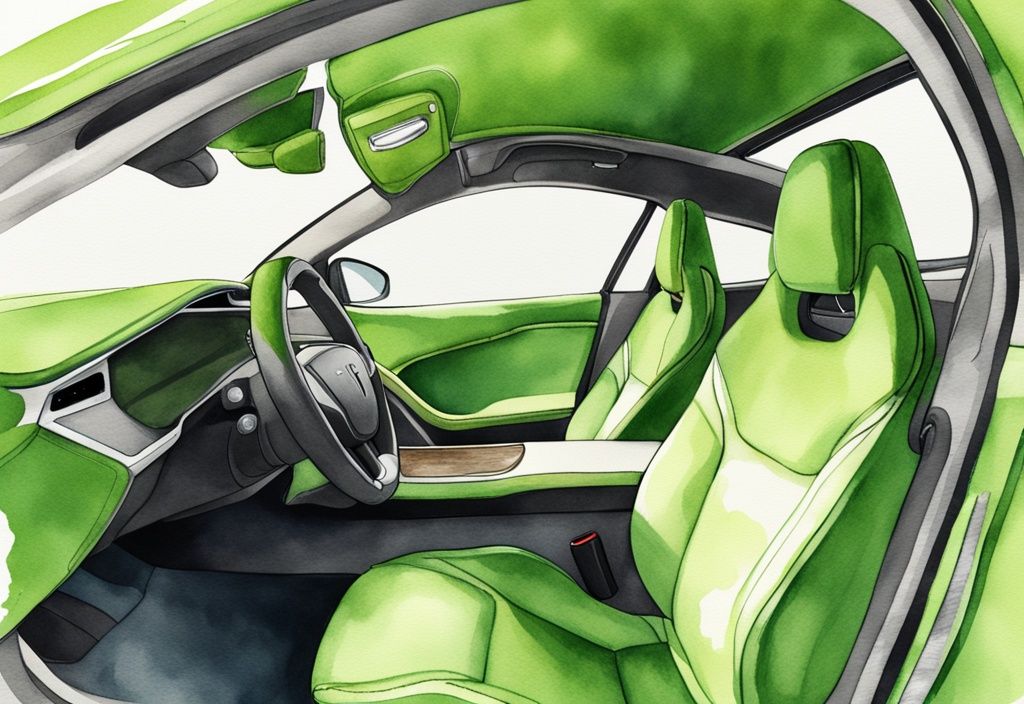

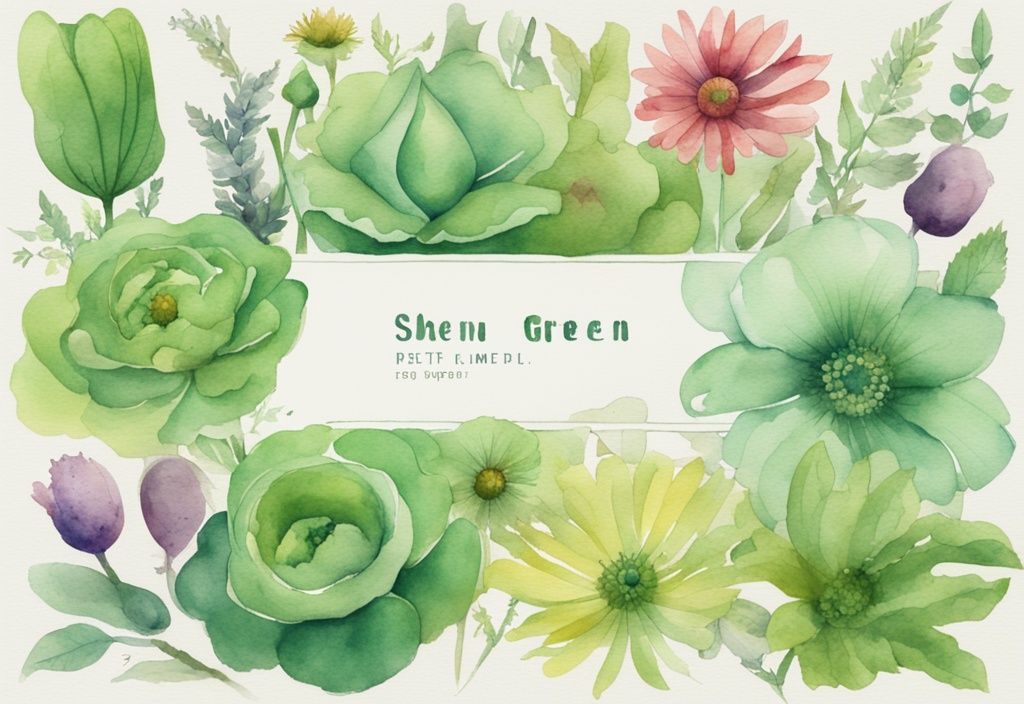

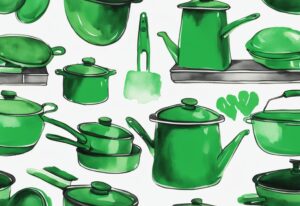




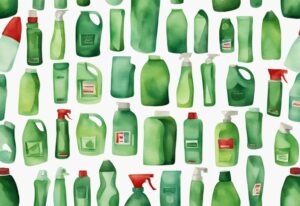




Post Comment